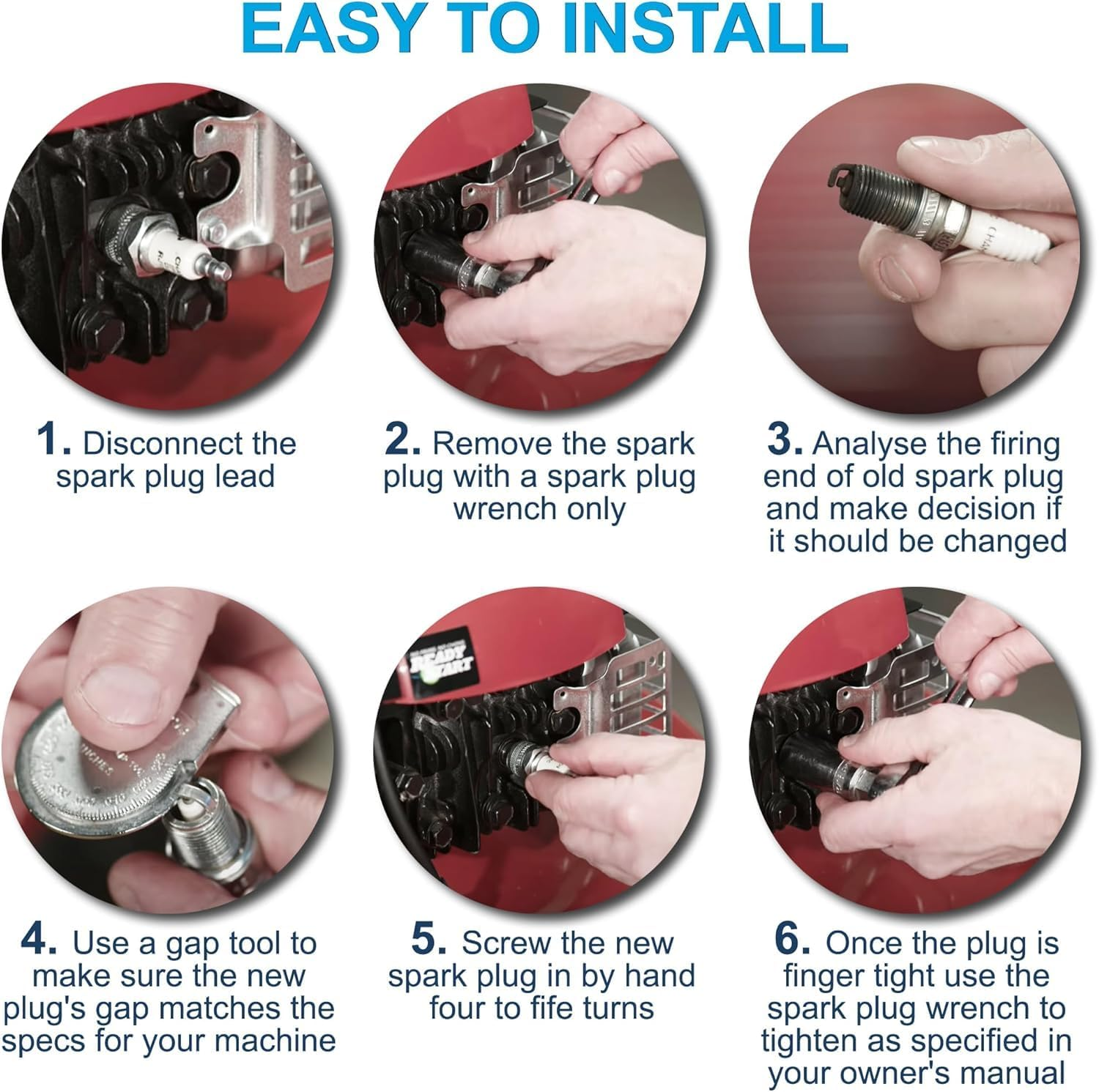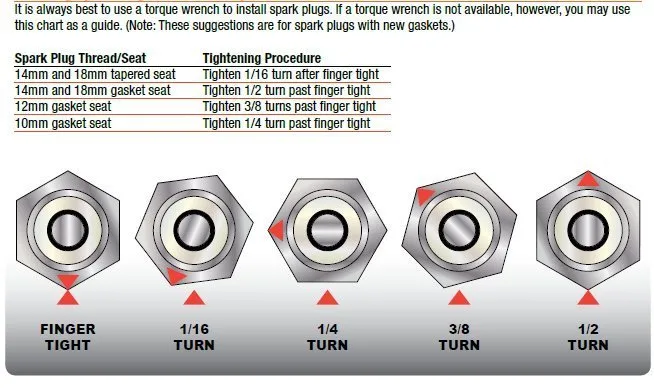Tightening spark plugs correctly is crucial for engine performance. Too loose or too tight can cause issues.
Spark plugs play a key role in engine efficiency. Knowing how tight to tighten them ensures optimal performance and avoids damage. Many people overlook the importance of proper spark plug torque. This can lead to engine misfires or even severe damage.
Tightening spark plugs may seem simple, but it requires precision. In this blog, we’ll explore the right way to tighten spark plugs. You’ll learn why correct torque is essential and how to achieve it. Whether you’re a car enthusiast or a beginner, understanding this will help maintain your engine’s health. Let’s dive into the details and keep your engine running smoothly.
Importance Of Proper Spark Plug Tightening
Proper spark plug tightening is very important. Loose spark plugs can cause engine misfires. This affects fuel efficiency. It also harms engine performance. Too tight spark plugs can damage the threads. This can lead to costly repairs. Always follow the manufacturer’s guidelines. This ensures the best engine performance.
Over-tightening can strip the spark plug threads. This makes future removal hard. Under-tightening may cause poor contact. This results in weak sparks. Weak sparks reduce engine power. Always use a torque wrench. This tool helps you tighten correctly. Check and re-tighten as needed. Regular checks prevent many problems.

Credit: www.bmw2002faq.com
Tools Needed For Spark Plug Installation
You need a spark plug socket. It fits over the spark plug. A ratchet handle helps you turn the socket. A spark plug gap tool is necessary. It measures the gap between electrodes. A torque wrench is important. It ensures correct tightness.
Use anti-seize lubricant. It prevents sticking. A magnetic socket helps hold the plug. It makes installation easier. A torque angle gauge can be used. It measures the rotation angle. An extension bar is handy. It reaches deep areas.
Steps To Tighten Spark Plugs Correctly
Make sure the engine is cool before starting. Wear gloves to protect your hands. Gather all the necessary tools. A spark plug socket and a torque wrench are essential. Check the spark plug gap. Adjust if needed. Clean the spark plug area. Dirt can fall into the engine. Be cautious.
Insert the spark plug by hand. Turn it clockwise. Use the socket to tighten it further. Do not over-tighten. Use the torque wrench for the final adjustment. Follow the torque specifications. This prevents damage. Check the tightness. It should be snug but not too tight. Repeat for all spark plugs. Ensure all are properly installed.
Torque Specifications For Different Engines
Car makers give specific torque values for spark plugs. These values make sure the plugs are tight enough. Too tight can damage threads. Not tight enough can cause poor engine performance.
Check your car’s manual for the exact torque specification. Use a torque wrench to follow these guidelines. This tool helps you apply the right amount of force.
Different engines need different torque values. Small engines may need 10-12 Nm. Large engines can need up to 30-40 Nm.
| Engine Type | Torque Specification |
|---|---|
| Small Engine | 10-12 Nm |
| Medium Engine | 20-25 Nm |
| Large Engine | 30-40 Nm |
Always refer to your engine’s manual. This ensures you use the correct torque. Proper tightening keeps your engine running smoothly.
Signs Of Over-tightening And Under-tightening
Properly tightening spark plugs is crucial. Over-tightening can cause damage to threads, while under-tightening can lead to misfires. Always follow manufacturer guidelines for correct torque.
Symptoms Of Over-tightening
Over-tightening spark plugs can cause serious damage. The spark plug threads might strip. This leads to costly repairs. A cracked insulator is another sign. This can cause misfires. Over-tightening can also lead to engine damage. Always use a torque wrench to avoid this. A proper torque ensures safety.
Symptoms Of Under-tightening
Under-tightening spark plugs is also harmful. Loose plugs can cause misfires. This impacts engine performance. Fuel efficiency drops too. Loose plugs may even fall out. This can damage the engine head. Always tighten spark plugs to the manufacturer’s specifications. This ensures optimal engine performance and safety.

Credit: www.driven2automotive.com
Common Mistakes To Avoid
Many people use the wrong tools for spark plugs. This can cause damage. Always use a spark plug socket. It has a rubber insert. This helps protect the plug. Avoid using pliers or adjustable wrenches. They can break the plug. Using the right tool makes the job easier and safer.
Torque specifications are important. They tell you how tight the spark plug should be. Too tight can strip the threads. Too loose can cause poor performance. Always check the manual for the right torque. Use a torque wrench. It helps you tighten the plug correctly. Never guess the tightness. Follow the specifications for best results.
Expert Tips For Optimal Spark Plug Performance
Regular checks of your spark plugs keep your car running well. Dirty spark plugs can cause engine problems. Clean or replace them often. Gap size is important too. Use the right tool to measure it. It helps in smooth engine performance.
Select spark plugs that match your car’s model. Check your car manual for recommendations. Always use high-quality brands. Cheap ones might not last long. Copper, platinum, and iridium are popular choices. Each has its benefits. Choose based on your needs and budget.

Credit: am.denso.com
Faqs On Spark Plug Tightening
How tight should spark plugs be? They should be snug, but not too tight. Over-tightening can damage threads. This can cause engine issues. Use a torque wrench for accurate tightening. Check the manual for the right torque specs.
What happens if spark plugs are too loose? Loose plugs can cause misfires. This leads to poor engine performance. You may also hear a ticking noise. Re-tighten them to fix the issue.
Can I hand-tighten spark plugs? Hand-tightening is not enough. Use a wrench for the final turn. This ensures a proper seal. But, do not overdo it. Follow the manual’s guidelines.
Conclusion
Properly tightening spark plugs ensures your engine runs smoothly. Overtightening can cause damage. Undertightening can lead to poor performance. Use a torque wrench for the best results. Always follow the manufacturer’s specifications. Regular maintenance keeps your vehicle in top shape.
Remember, a well-maintained engine lasts longer. Happy driving!
